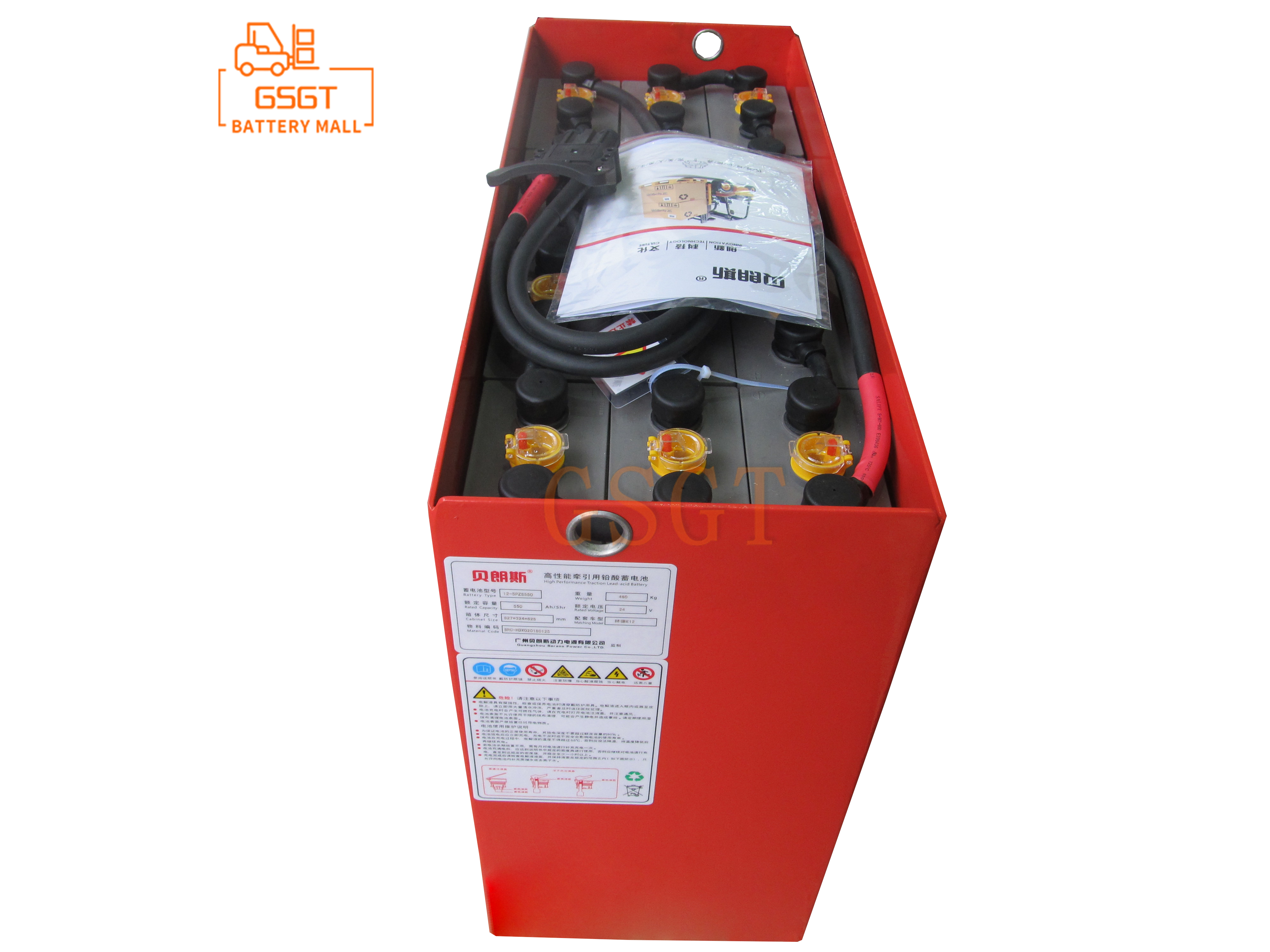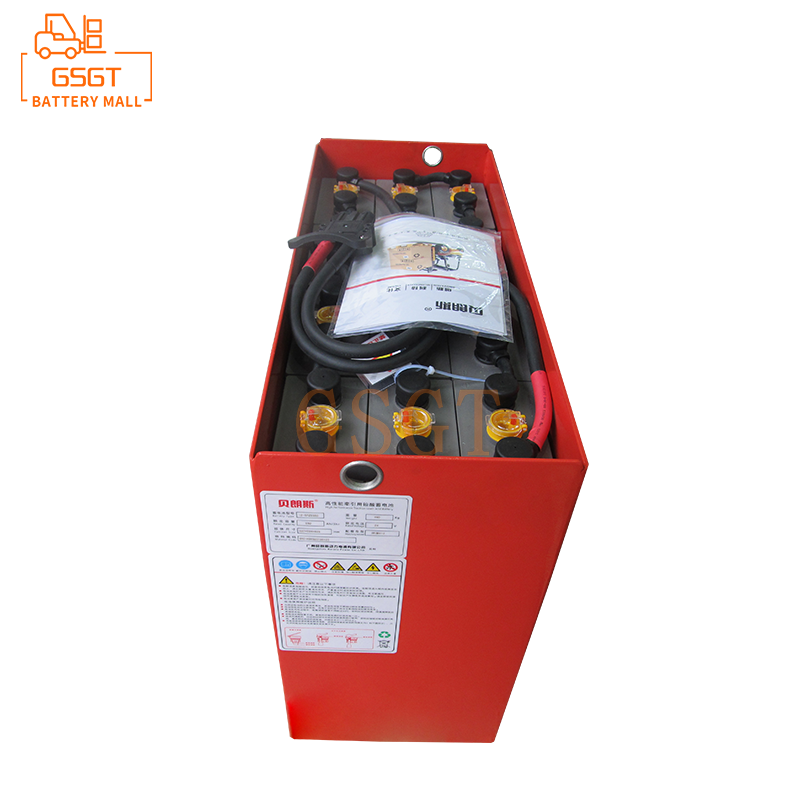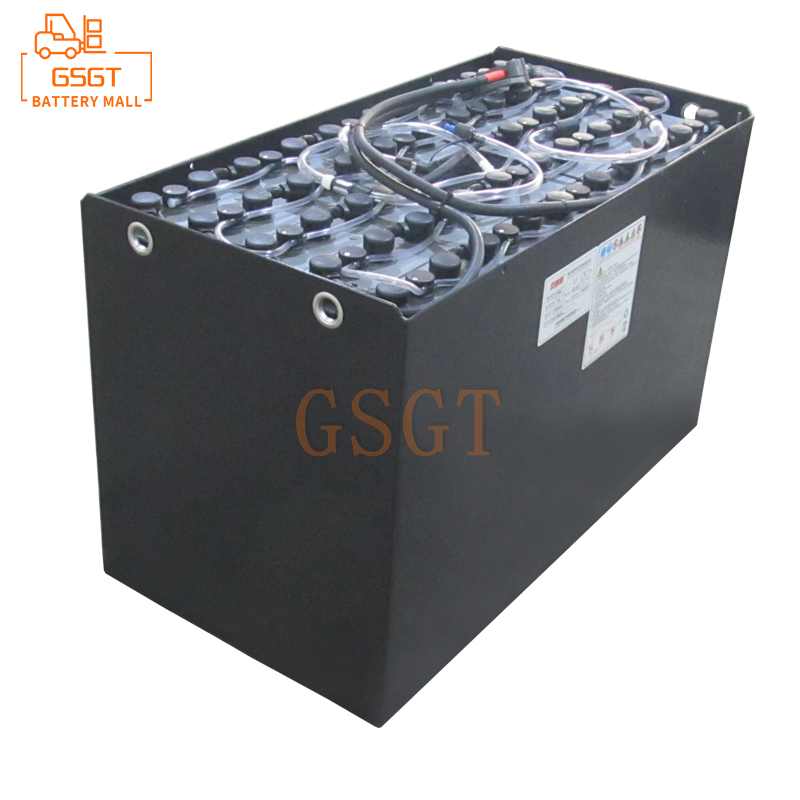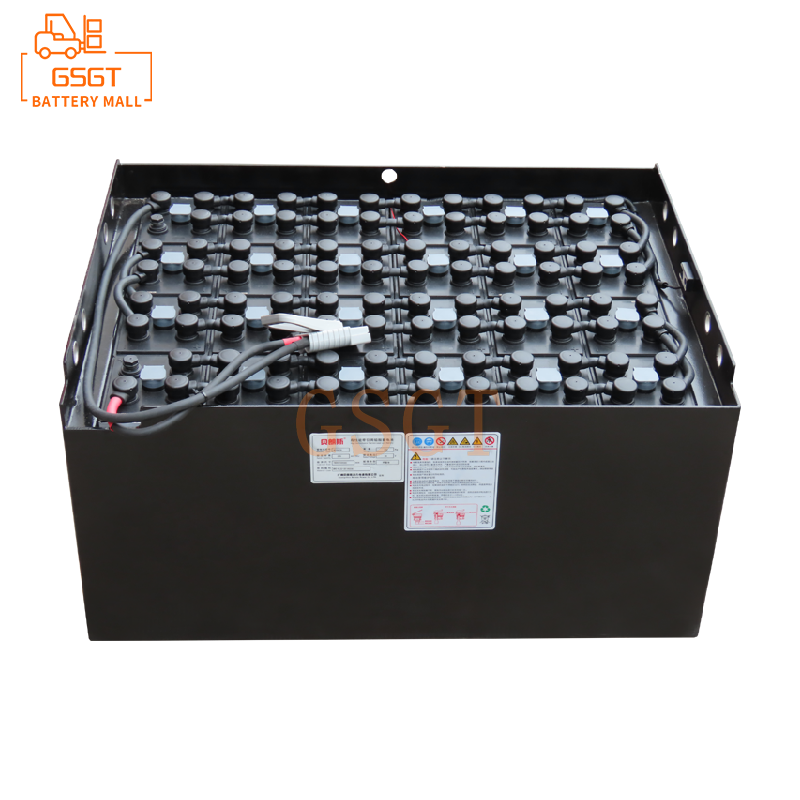Time:2025-06-14 10:38:17
Browse:606
1. Introduction
In the field of industrial logistics, forklifts, as indispensable handling equipment, mostly rely on lead-acid battery packs for their power sources. Lead-acid battery packs are composed of multiple individual cells connected in series. The performance and lifespan of the battery pack largely depend on the consistency of the individual cells. Once the capacity, voltage, internal resistance and other parameters of a single battery are inconsistent, it will lead to the "barrel effect", causing the performance of the entire battery pack to decline, even shortening its service life and increasing the operating costs of the enterprise. Therefore, it is of vital importance to do a good job in the consistent maintenance of lead-acid battery packs in forklifts. This article will systematically expound the relevant knowledge and methods of consistency maintenance of lead-acid battery packs in forklifts, providing practical references for enterprises.
2. The Principle and Importance of Consistency in Lead-Acid Battery Packs
2.1 The Principle of Consistency
The consistency of lead-acid battery packs refers to the degree of similarity among individual cells within the pack in key parameters such as capacity, voltage, internal resistance, and charge-discharge characteristics. Under ideal conditions, during the charging and discharging process of series-connected individual cells, the current is the same, and the changes in battery capacity and voltage fluctuations of each individual cell should remain synchronized. However, due to the process differences in battery production, the incomplete consistency of material properties, and the influence of factors such as environmental temperature, charge and discharge depth, and charge and discharge rate during use, the parameters of individual cells will gradually vary, thereby undermining the consistency of the battery pack.
2.2 Importance
Highly consistent lead-acid battery packs can ensure the stable operation of forklifts. During the charging process, a battery pack with good consistency can ensure that each individual battery is charged evenly, avoiding the situation where some batteries are overcharged and others are undercharged. Overcharging will accelerate the aging of battery plates and the shedding of active substances, shortening the battery life. Undercharging will prevent the battery capacity from being fully utilized, affecting the forklift's endurance. During the discharge process, a battery pack with good consistency enables each individual battery to work in coordination, outputting stable voltage and current, and providing continuous and powerful power for the forklift. Conversely, poor consistency of battery packs not only reduces overall performance but also may cause safety hazards, increase the frequency of battery replacement, and significantly raise the operating costs of enterprises.
3. Factors Affecting the Consistency of Lead-acid Battery Packs in Forklifts
3.1 Production and Manufacturing factors
The quality of raw materials, production processes, assembly accuracy and other factors in the battery production process will all have an impact on the consistency of batteries. Raw materials such as plates and electrolytes from different batches may have subtle differences in composition and performance. If the welding quality and the control accuracy of acid injection volume in the production process do not meet the standards, it will lead to inconsistent initial parameters of individual cells. During the assembly process, if the arrangement and connection methods of individual battery cells are unreasonable, it will also intensify the parameter differences during use.
3.2 Environmental factors for use
The ambient temperature has a significant impact on the performance of lead-acid batteries. When the temperature is too high, the chemical reactions inside the battery accelerate, the self-discharge rate increases, and the corrosion of the plates intensifies. When the temperature is too low, the viscosity of the electrolyte increases, the diffusion rate of ions slows down, the internal resistance of the battery increases, and the charging and discharging efficiency decreases. Forklifts operate in different working environments, and the local temperatures of each individual battery may vary, which can lead to inconsistent performance of each individual battery. In addition, environmental factors such as humidity and dust in the forklift operation site, if not handled properly, may also affect the performance and consistency of the battery.
3.3 Charging and Discharging Management factors
Unreasonable charging and discharging methods are one of the important reasons for the poor consistency of battery packs. Excessive discharge will cause sulfation of the battery plates and reduce the battery capacity. Excessive charging current or overly long charging time can cause the battery to heat up severely and accelerate its aging. In addition, different chargers vary in the stability and accuracy of charging voltage and current. If an mismatched charger is used, it will also affect the consistency of the battery pack.
3.4 Maintenance factors
Inadequate daily maintenance and care, such as failure to check and adjust the electrolyte level in a timely manner and failure to perform regular equalization charging on the battery, will all lead to a decline in battery performance, and the differences among individual cells will gradually increase. Meanwhile, mechanical damages such as vibration and collision that battery packs suffer during use may also damage the internal structure of individual batteries, affecting their performance and consistency.
4. Detection Methods for Consistency of Lead-Acid Battery Packs in Forklifts
4.1 Voltage Detection
Voltage detection is the most fundamental and commonly used detection method. Use a high-precision multimeter to measure the open-circuit voltage of each individual battery after the battery pack has been left to stand for a period of time. Under normal circumstances, the open-circuit voltage difference of the same group of batteries should be controlled within a relatively small range, and it is generally recommended not to exceed 0.05V. If the voltage difference is too large, it indicates that there may be a problem with the individual battery and further inspection is required. During the charging and discharging processes, the voltage changes of individual batteries can also be monitored in real time to observe whether the rates of voltage rise and fall of each individual battery are consistent, thereby determining the consistency of the battery pack.
4.2 Internal Resistance Detection
Internal resistance reflects the magnitude of the resistance inside a battery and is closely related to the battery's capacity and performance. The internal resistance of a single battery can be measured quickly and accurately through a dedicated battery internal resistance tester. As the battery's usage time increases and its performance declines, its internal resistance will gradually increase. Generally speaking, the performance of individual cells with excessive differences in internal resistance within the same group is relatively poor. During the detection process, the internal resistance data of each individual battery should be recorded and compared with the initial data to analyze the changing trend of the internal resistance and promptly identify batteries with declining performance.
4.3 Capacity Detection
Capacity detection is a key indicator for evaluating battery performance and consistency. Capacity detection usually employs standard charge-discharge testing methods. First, the battery pack is fully charged, then constant discharge is carried out at the specified discharge current until the voltage of each individual battery reaches the terminal voltage. The discharge time is recorded, and the actual capacity of the battery is calculated based on the formula. By comparing the capacities of each individual battery, the consistency of the battery pack can be intuitively understood. As capacity testing takes a long time, it is generally advisable to conduct a comprehensive test once at regular intervals.
4.4 Charge and Discharge Curve detection
Using professional battery charge and discharge equipment, charge and discharge tests are conducted on individual batteries, and charge and discharge curves are plotted. By analyzing the shape, slope, inflection point and other features of the charge and discharge curve, one can gain a deeper understanding of the battery's charge and discharge characteristics, and determine the battery's health status and consistency. For instance, if the charging curve of a single battery experiences a rapid increase in voltage during the same charging stage, or if the discharging curve experiences a rapid decrease in voltage during the same discharging stage, it indicates that there are performance differences between this battery and others.
5. Maintenance Methods for the Consistency of Forklift Lead-acid Battery Packs
5.1 Select and match batteries reasonably
When choosing a lead-acid battery pack for a forklift, it is advisable to select batteries produced by the same manufacturer and the same batch to ensure a high consistency in the initial parameters of the batteries. At the same time, based on the actual usage requirements and working conditions of the forklift, the specifications and models of the battery should be reasonably selected, including parameters such as rated voltage, capacity, and discharge rate, to avoid affecting consistency and performance due to improper battery selection. When assembling the battery pack, operations must be carried out strictly in accordance with the manufacturer's requirements to ensure that the connection of individual battery cells is firm and the contact is good, and to minimize the impact of connection resistance on the consistency of the battery pack.
5.2 Optimize charging and discharging management
Adopting appropriate chargers and charging modes is an important measure to ensure the consistency of battery packs. It is recommended to use a charger with intelligent charging and discharging functions. It can automatically adjust the charging voltage and current according to the battery's status, achieving different charging processes such as constant current, constant voltage, and float charging. During the charging process, overcharging and undercharging should be avoided. Once the battery pack is fully charged, stop charging in time. For battery packs that are not used for a long time, regular supplementary charging should be carried out to prevent self-discharge of the battery and resulting in low power. During the discharge process, the depth of discharge should be controlled to avoid excessive discharge. Generally, it is advisable to keep the depth of discharge at around 80%. At the same time, the charging and discharging time should be reasonably arranged according to the working intensity and working conditions of the forklift to avoid frequent and rapid charging and discharging causing damage to the battery.
5.3 Regular maintenance and servicing
Regularly inspect the appearance of the battery pack to check for any damage to the casing or leakage. If any problems are found, deal with them promptly. Check whether the connection cables between individual battery cells are loose or aged to ensure reliable connections. Regularly measure the electrolyte level. When the level is lower than the standard mark, distilled water or dedicated lead-acid battery replenishment solution should be added to keep the electrolyte level within the specified range. At the same time, pay attention to the density of the electrolyte. Regularly measure the density of the electrolyte with a hydrometer and make adjustments based on the measurement results. In addition, perform equalization charging on the battery pack at regular intervals. Equalization charging can make the power of each individual battery tend to be consistent, effectively improving the consistency of the battery pack.
5.4 Repair and replace abnormal batteries
For single cells with poor consistency detected, repair can be carried out according to specific circumstances. For batteries with relatively mild sulfation on the plates, methods such as pulse repair and low-current charging can be adopted for repair to restore part of the battery's capacity and performance. However, for batteries with severely deteriorated performance that cannot be repaired, they should be replaced in a timely manner to avoid affecting the performance and lifespan of the entire battery pack. When replacing the battery, choose a battery with parameters similar to the original battery for replacement, and ensure that the new battery is correctly and reliably connected to the original battery pack.
5.5 Improve the usage environment
Creating a favorable usage environment for forklift lead-acid battery packs can effectively enhance the consistency and service life of the batteries. Try to park the forklift in a place with suitable temperature, dryness and good ventilation, and avoid exposing the battery to harsh environments such as high temperature, low temperature and humidity for a long time. When working in a high-temperature environment, appropriate cooling measures can be taken, such as installing cooling fans, etc. Before working in a low-temperature environment, the battery can be preheated to enhance its activity. At the same time, it is necessary to keep the battery surface clean. Regularly remove dust, electrolyte and other dirt on the battery surface to prevent short circuits and self-discharge of the battery.
6. Conclusion
The consistency maintenance of forklift lead-acid battery packs is a systematic and important task, involving multiple links such as battery selection, use, charging and discharging management, and maintenance. By thoroughly understanding the factors that affect the consistency of battery packs, applying scientific and reasonable detection methods to promptly identify problems, and taking effective maintenance measures, the consistency of battery packs can be significantly improved, the service life of batteries can be prolonged, the operating costs of enterprises can be reduced, and the stable and efficient operation of forklifts can be ensured. Enterprises should attach great importance to the consistent maintenance of lead-acid battery packs for forklifts, formulate complete maintenance plans and operation procedures, strengthen the training of relevant personnel, ensure the smooth progress of maintenance work, and provide reliable power support for the production and operation activities of the enterprise.

$1960

$1500

$5220

$5710

MESSAGE
Professional And Efficient
Security
Affordable Price
Professional Services